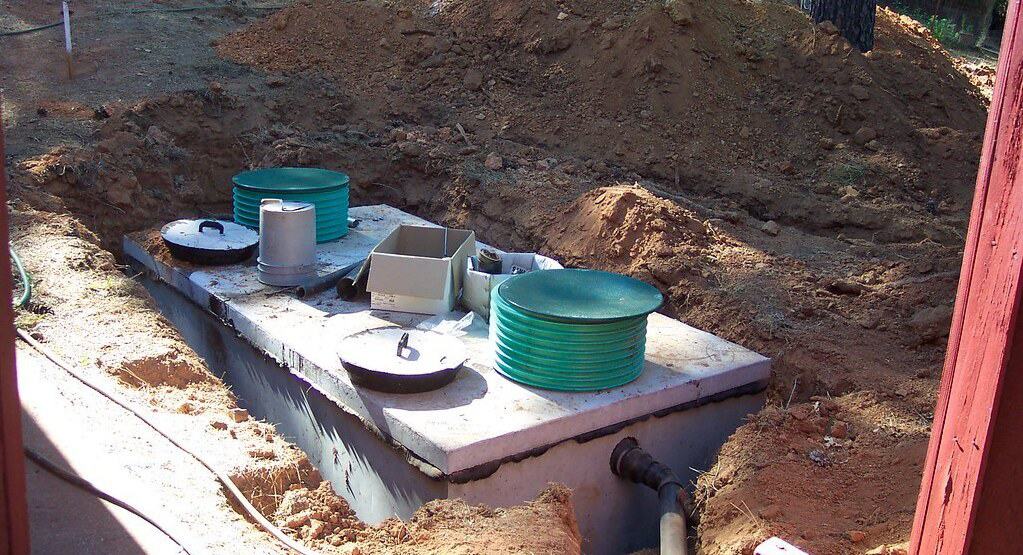You probably don’t think much about your septic tank. When you are a homeowner, you recognize the signs telling you that something needs to be repaired in your house.
For example, you know that there is a hole in your roof when the ceiling is leaking or when the hinges in your doors start squeaking, you know it needs oil. But what about the septic tank? How do you know if you need your septic tank pump?
It is not easy to tell when the septic tank is full, especially if you are not familiar with how it works. The truth of the matter is, the septic tanks work extra hard for you to recognize that it is full and needs to be pumped. It is failing to notice these signs can spell trouble for you as seldom pumped septic tanks have severe repercussions.
Before we discuss the signs that would tell you when it’s time to pump the septic tank, let us get know more about this system first.
What is a Septic Tank and How It Works?
Most homes and buildings have underwater sedimentation tanks made for wastewater treatment. This is called a septic tank. The wastewater undergoes a process known as biological decomposition, while the remaining liquid is drained out of the tank.
The septic system facilitates safe wastewater disposal and is common in areas where there is poor drainage or when the primary sewage is far from the house. It has a straightforward design. What you’ll have is a round or rectangular watertight container located underground, which is made with concrete, plastic, or fiberglass.
There are two pipes connected to the tank: one for inlet and the other is the outlet. The purpose of the inlet pipe is to collect the wastewater into the septic tank. It is longer than the other because the solid should separate from the liquid waste along the way. The drain field or the outlet pipe’s function is to remove the preprocessed wastewater from the tank and spread it on the soil or in any watercourses near it.
The wastewater in the tank further separates into three layers: the top layer composed of oil and grease, the waste particles on the second layer, and the more solid particles settle at the bottom. The top layer is also called scum, while the bottom layer is the sludge.
It is the bacteria present in the wastewater that hastens the breakdown of the solid waste, causing the liquids to segregate and easily get drained.
When the septic tank is maintained correctly, it can serve your home well, generating all the wastewater from your home. It should be pumped regularly, but as we’ve said at the beginning of the article, many people are not aware when to do this.
What are the Signs of a Full Septic Tank?
Now, let us look at the warning signs you need to know so that you can spot a full septic tank.
#1 The time from the last pumping
Septic tanks should be pumped every three to five years. For systems that have mechanical or electrical components, it should be more frequent. Pumping interval is the first thing you need to learn about septic tanks, so you will know when it is time. The frequency can be affected by four factors: the household size, the volume of solid waste, the amount of wastewater, and the size of the septic tank.
When you are moving to a previously occupied home, ask the previous owners about pumping and maintenance schedules. This way, you don’t have to play a guessing game when to pump your tank.
If you have no idea when was the last time the septic tank was pumped, move to the next warning signs.
#2 Foul Odor
The second sign that your septic tank is vying for your attention is it emits an offensive odor. The septic system should not have any smell because it is meant to provide a convenient way of processing and to dispose of wastewater.
If you are smelling a foul odor coming from your drainage, it is giving you a warning that you have a full septic tank. This nasty smell can only come from the waste in the water that you are sending down to your septic system because as it fills the odor-causing gases escape.
You should also ensure that your septic system is well ventilated. check out this article I recently wrote on septic tank vents.
#3 Pooling of water
The next warning sign that the septic tank is full is when you see standing water around the drain field. It is a sign that the septic tank is overflowing and has reached its maximum capacity. When the tank is full, the solid waste can clog the piping system of your drain field. This forces the liquid to the top of the ground. It is noticeable when you see water in the grass, but there is no other source around.
#4 A healthy lawn
The increased levels of water coming from the tank can affect the grass around the location of the septic tank. When you see an extraordinarily healthy lawn around the septic as compared to other parts of your ground, it is a sign that your tank is at its full capacity and needs immediate pumping to prevent further damages to your drain field.
#5 Sluggish flushing or draining
If you notice that your bathtub, sink, or showers are not draining as fast as it used to be, or if the toilet is not flushing as quickly as it should, it is a sign that you need to pump your septic tank. It has trouble taking in more water. Noting this sign this early is good because you will be able to pump your tank before anything worse happen.
You should also ensure that you’re using septic safe toilet paper to prevent clogging your toilet.
#6 Gurgling water in the pipes
Another sign that your septic tank has reached its maximum capacity is when you hear gurgling sounds on the pipes. This noticeable in toilets and drains and is an indication that you need to get the tank pumped. Calling an expert to do an inspection can be a good start.
#7 Sewage backup
Of all the signs that your septic tank is full, you would not want to experience this. But if you don’t follow the pumping schedule, and choose to ignore the signs above, you will most likely have sewage back up. To be in this situation is messy and costly.
The minute you notice this sign, you should call for septic service immediately to avoid further damage.
When Should I Pump My Septic Tank?
What Causes Scum Buildup?
We have defined what a septic scum and a septic sludge is but to understand them better, we’ll tell you again.
Septic scum is the accumulated wastes that float on the water inside the septic tank. The septic sludge, on the other hand, is the accumulated solids that are heavier and sinks at the bottom of the tank.
Four factors can accelerate the rate of accumulation of waste inside your septic tank. It can be the number of people in the household, the water usage in the house, the quantity of solids in the wastewater, and the size of the septic tank.
All these factors can lead to scum buildup in the system. When it reached a critical level, it must be pumped out to maintain your tank in good working condition.
What is a Full Septic Tank?
Your septic tank is designed with an outlet shaped like a T. This prevents the sludge and scum from leaking out of the tank and going to the drain field. For septic professionals, the sign to pump the septic tank is when the bottom of the scum is near six inches to the outlet, or if the sludge is around 12 inches.
We have found three well-accepted definitions of a “full” septic tank. Here they are:
- The tank is filled to its normal level. It means that the water inside the septic tank has reached the level that is designed to contain. This means that you are not experiencing any issues with the inlet and outlet pipes, and they are functional.
- The septic sludge has piled up. Solid wastes will continue to accumulate at the bottom of the tank and stay there. It will not disappear on its own and needs to be pumped for the wastewater to flow out.
- The tank is overfilled. When the drainage can no longer receive wastewater, it will flow back into the overflow tank, causing the water to rise and fill the tank.
What Can We Do?
Maintaining the septic system is simple, and it is not expensive. What you must learn is how to follow the maintenance schedule. On average, the septic tanks should have inspections every three to five years. When you call for septic tank inspection, the service provider will inspect the level of scum and sludge in the tank.
What you should do is to keep a maintenance record of your septic tank. The septic professional will tell you the level of sludge and scums, and if pumping is recommended, you should have it done immediately.
If you see the signs, we have mentioned above, that means the septic tank is full. Conducting periodic inspections on the drain field area will also help mitigate the consequences of a full septic tank. You can use our guide as a simple way of identifying problems with your septic system without the help of septic professionals.
Final Word
Your septic system is a green way of treating wastewater from your home. It can handle huge amounts of wastes generated by your household, but it is not resistant to maintenance issues. Using our list for signs of a full septic tank, you can make sure that it is pumped regularly, and it will be able to continue to perform its essential and valuable functions in your house.
My name is Eugene Thornhill. I'm an outdoor enthusiast who loves nothing more than being one with nature. I've lived in numerous outdoor homes and even constructed my own. Living off-grid is something I'm very familiar with, more so than living in the city. For many years I've dealt with the many problems of living off-grid. It's time to pass on my knowledge through Cabinguides.


